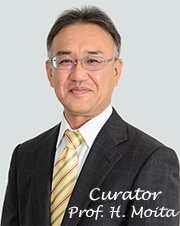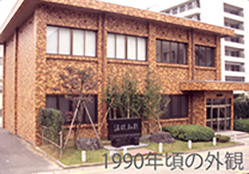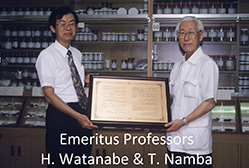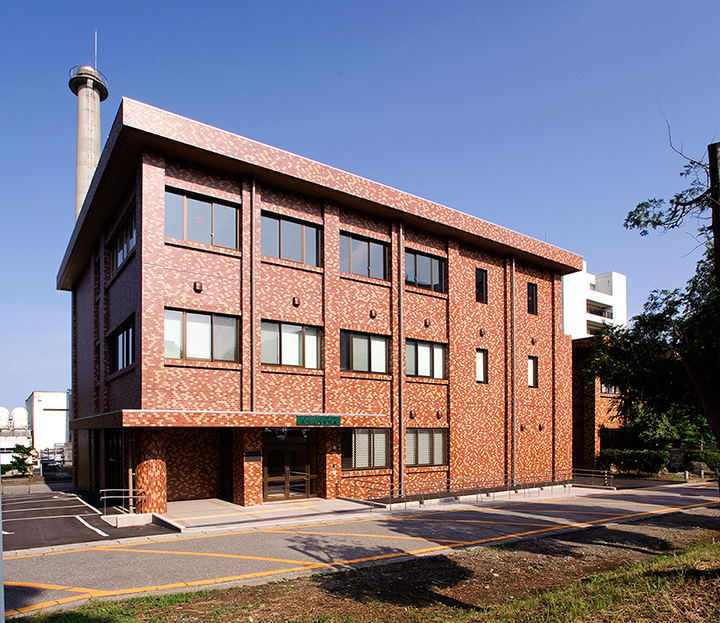Museum of Materia Medica
Mission
Collection of the World's Traditional Medicines and Human Knowledge
 In every part of the world, people use folk or traditional medicines according to their cultural traditions. These medicines are a part of the cultural heritage of each population, and are not only useful for a specific group of people, but also have the potential for contributing greatly to modern medicine. Actually, there is also a trend toward using the world's traditional and folk medicines as complementary and alternative medicines in Western countries. Since the materials used for folk medicine are completely natural - i.e., are "crude drugs" or "herbal medicines" - their quality change depending on historical time and location, so there may be different names for a particular species or a same name for different species.
In every part of the world, people use folk or traditional medicines according to their cultural traditions. These medicines are a part of the cultural heritage of each population, and are not only useful for a specific group of people, but also have the potential for contributing greatly to modern medicine. Actually, there is also a trend toward using the world's traditional and folk medicines as complementary and alternative medicines in Western countries. Since the materials used for folk medicine are completely natural - i.e., are "crude drugs" or "herbal medicines" - their quality change depending on historical time and location, so there may be different names for a particular species or a same name for different species.
In Museum of Materia Medica, Institute of Natural Medicine, University of Toyama, we have about 30,000 samples of crude drugs which are used in Japanese Kampo medicine, Traditional Chinese Medicine (TCM) and Indian medicine (Ayurveda) and others. They have been collected during the past 50 years as representative of various medical traditions. We also keep materials used in research at this institute. As the museum with the largest collection of crude drugs, it is also highly regarded for educational purposes.
We are promoting collaborative researches and expanding the database of those heritages as well as collecting, preserving, and exhibiting.
History
| Oct. 1973 | The Museum was started as a crude drug specimen room belonging to the Department of Development of Natural Drug Resources, Research Facilities for Wakan-Yaku under Faculty of Pharmaceutical Sciences, Toyama University. |
|---|---|
| Jun. 1974 | Research Institute for Wakan-Yaku under Toyama University was founded. |
| Jun. 1978 | Research Institute for Wakan-Yaku under Toyama Medical and Pharmaceutical University was founded. |
| Apr. 1980 | A crude drug specimen room in Research Institute for Wakan-Yaku, Toyama Medical and Pharmaceutical University was founded. Crude drug samples were moved from Toyama University. |
| Jul. 1985 | The ground floor of a preservation building for pharmaceutical materials was developed as the Museum of Materia Medica (202㎡) under the care of Department of Development of Natural Drug Resources. Crude drug samples were moved from Research Institute for Wakan-Yaku. |
| Sep. 1994 | The floor size of the Museum (193㎡) was extended. |
| May 1996 | Research Center for Ethnomedicines, (Assoc. Prof. 1; Assist. Prof. 1) affiliated to Research Institute for Wakan-Yaku, was founded. The museum has been guided by the Center. |
| Apr 1998 | Position of Foreign Visiting Professor and Associate Professor was established in Research Center for Ethnomedicines. |
| Oct 1998 | The first exhibition of the museum for public was held. Since this year, an annual exhibition has been started. |
| Apr 2000 | The database ETHMEDmmm (Japanese version) was opened on the web site under the home page of this museum. |
| Apr 2002 | Regulations on use of crude drug samples preserved in the Museum of Materia Medica, Research Center for Ethnomedicines were enforced. |
| Jul 2005 | The database ETHMEDmmm (English version) was opened on the web site. |
| Aug 2005 | Reorganized as the Museum of Materia Medica, Research Center for Ethnomedicine. Regulations on use of crude drug samples preserved in the Museum of Materia Medica, Research Center for Ethnomedicine were enforced. |
| Oct 2005 | Reorganized as the Museum of Materia Medica, Research Center for Ethnomedicine, Institute of Natural Medicine, University of Toyama. |
| Mar 2008 | The Shoruihonzo database was opened on the web site |
| Jun 2010 | Alteration and extension of the building (a new 3rd floor extension was built). |
| Nov 2011 | Fitment of 3rd floor of the Museum of Materia Medica. |
| Dec 2018 | The number of specimens stored in the Museum reached over 30,000. |
| Apr 2020 | Reorganized as the Museum of Materia Medica, Institute of Natural Medicine, University of Toyama. |
Building




The new building was completed in 2010
The Museum keeps and displays crude drug samples, herbal specimens (33,000 items), pharmaceutical preparations of Kampo formulations, drugs-on-deposit productions in Toyama, herbological books and so on.
Gallery 1
Focusing on East Asia, crude drugs used in Japanese Kampo medicine, TCM, Japanese folk medicines, etc are displayed. A pill rounder machine used till the early Showa era as well as crude drug samples listed in the 5th edition of the Japanese Pharmacopoeia are exhibited.
Gallery 2
Crude drugs used in Indian medicine (Ayurveda), South Asia, Southeast Asia and West Asia,Tibetan Medicinal Thangkas and an alembic are also exhibited.

